
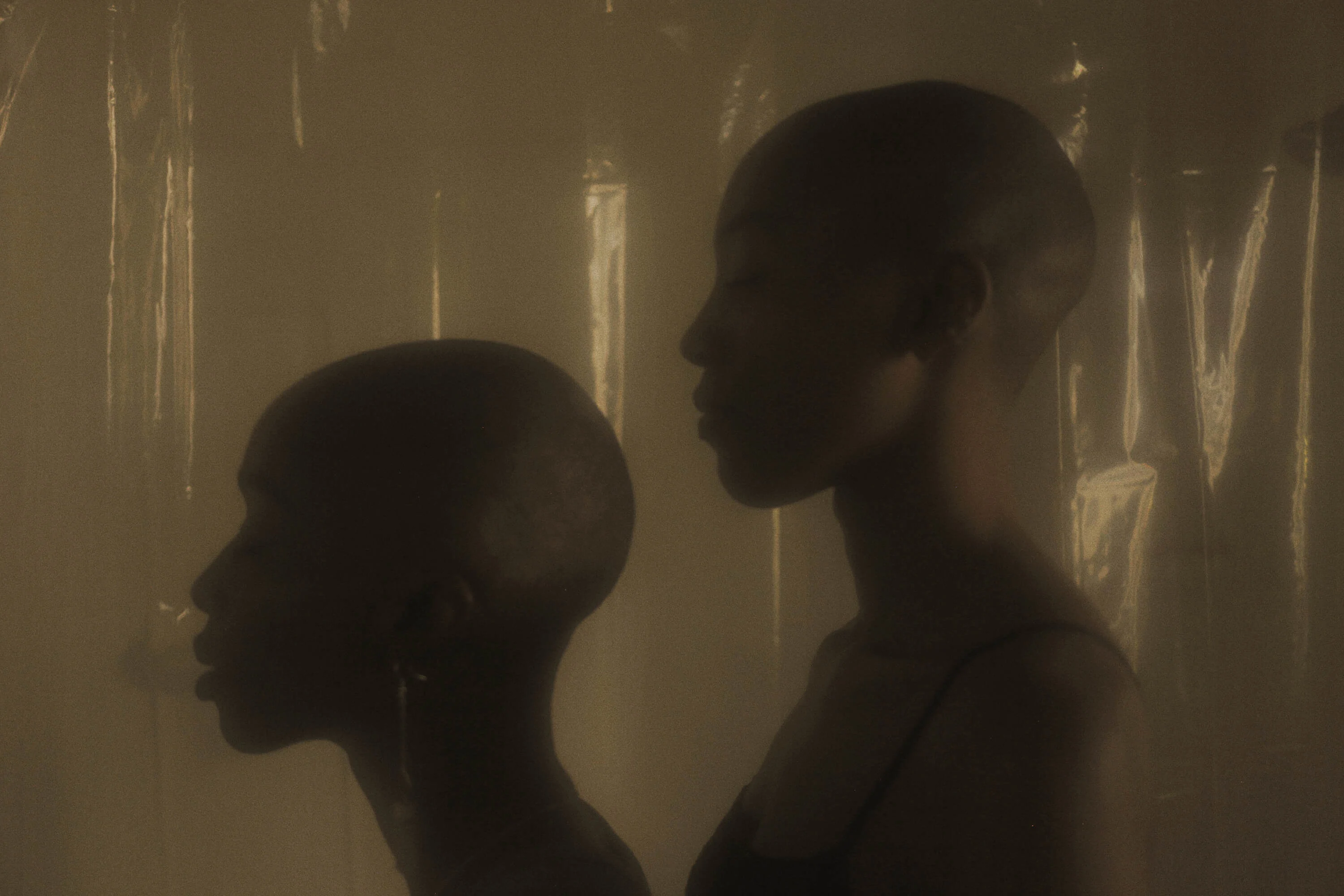
Photographer Rikkí Wright draws on her personal experience and eye for documenting the nuances of life to tell the stories and bonds of sisterhood between women in black communities. Writer Alix-Rose Cowie digs deeper into her practice to discover how she is reclaiming the female narrative.
As a kid, Alabama-born photographer Rikkí Wright spent countless hours on the couch in her grandmother’s living room staring up at the wall-to-wall family photos. “It’s a grandmother’s dream home,” she says. Most of the portraits were shot in the 60s or 70s and Rikkí was drawn to their sepia tones. And today, one of the first things you notice about the portraits she makes is the distinctive warm colour grade she uses in her work. “I think that’s just what I want my work to feel like,” she says. “It feels very maternal in a way. When I think of what a mother is, I’m trying to emulate that feeling when people view my work. They feel good and they feel safe and they feel warm.”

When Rikkí was just two years old, her mother passed away. This life-altering event informs almost every aspect of her art in some way. Rikkí and her sister went to live with their grandmother and a few years later moved into their aunt and uncle’s home where they were raised together with their cousin, who she considers a second sister. “When you lose a parent at such a young age you feel robbed of some things,” she says. At friends’ houses she’d see family photo albums and scrapbooks that their mothers had put together and felt a chunk of information was missing from her own life. So at 13 years old she asked for a camera for Christmas and became the self-appointed documentarian of her own family history. “When you lose someone you value memories a lot more,” she says. “I told myself that I was going to document everything so I’d always have something to look back on; a tangible record to see my growth or see parts of my life and just remember.” She’d take photographs of family vacations, Christmases and Thanksgivings, of people at the church where her uncle was a pastor and every year the family would gather around the table to look through her pictures from the year before. “Keeping the links together is really important for family history, especially the black family history,” she says.
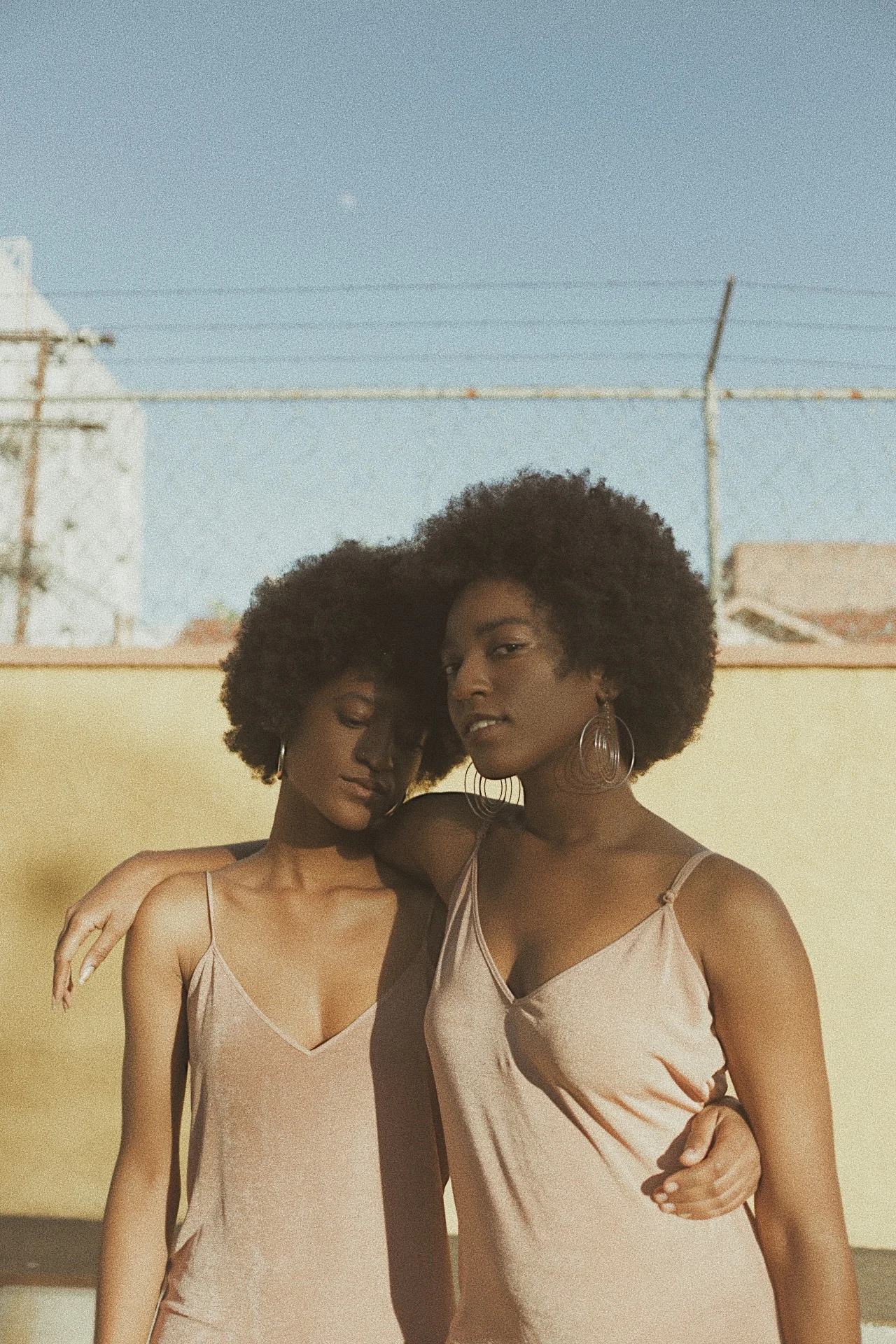
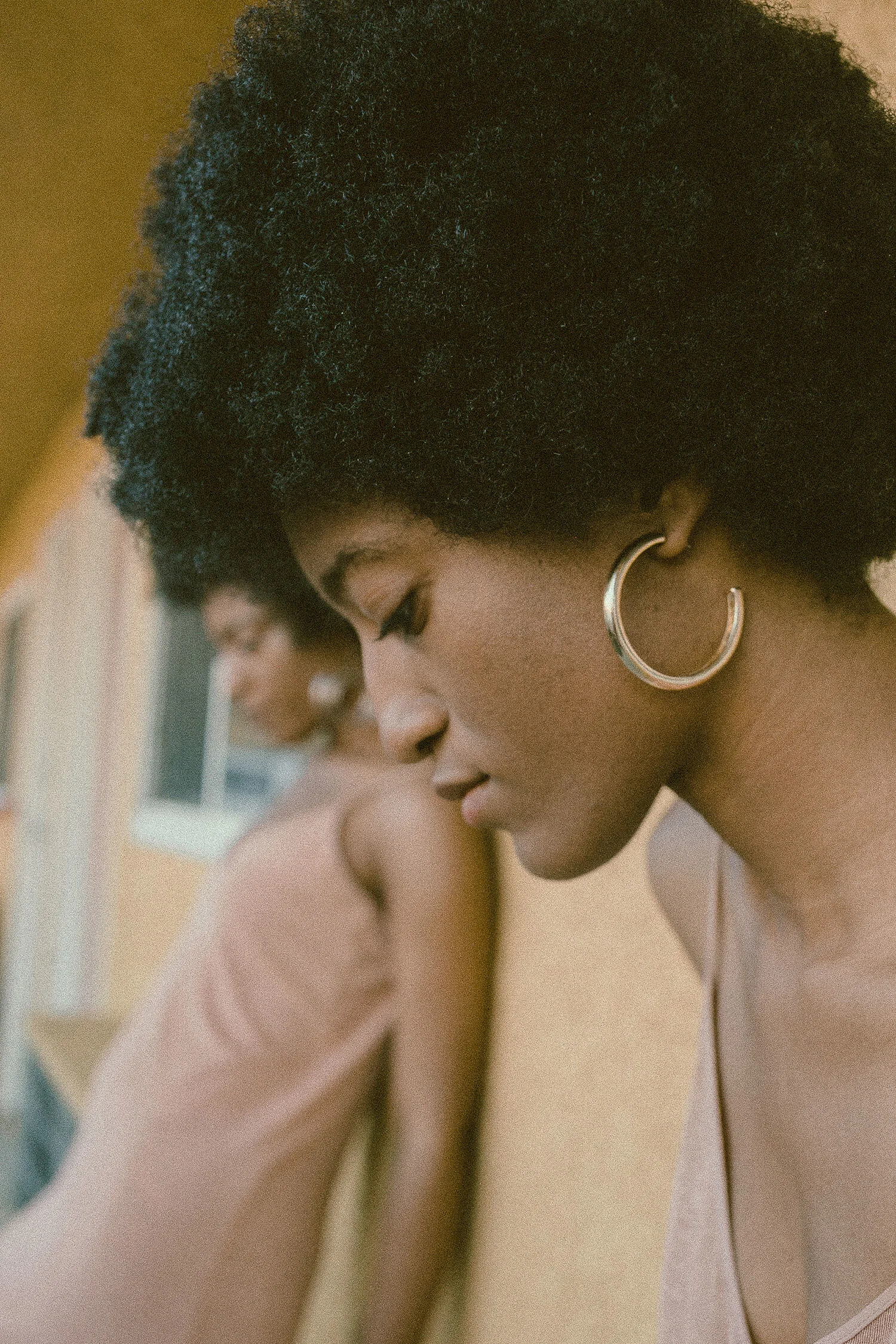
Another favourite pastime of Rikkí’s was doing her sisters’ hair and documenting the hairstyles; the images perhaps a very early precursor to her current ongoing project Sis. which explores black sisterhood. It began when Rikkí was working as a manager at an American Apparel store in Miami — she’s been based in Los Angeles for the last three years — and a pair of twin sisters walked in. She was intrigued by the way they were interacting with each other so asked if she could shoot them one day. “It was kind of random and weird but they were really down and I ended up shooting them for a few years because we lived not too far away from each other,” she says. “We’d just hang out and I’d have my camera and we’d start shooting.”
During these sessions Rikkí would chat to her subjects about their identity as twins and as individuals and the conversations got her reflecting on her own relationship with her sister who is just 11 months older than she is. For three weeks of the year they’re the same age. “I felt similarities in the fact that I was always looking to my sister as an identity reference,” she says. “I’m actually always interested in this conversation about how some parts of our identity are formed in our sibling relationships.” She became curious about talking to more sets of sisters; sisters who are really close or who are not close at all. Over time her interest became a body of work which was exhibited for the first time in LA in 2018.
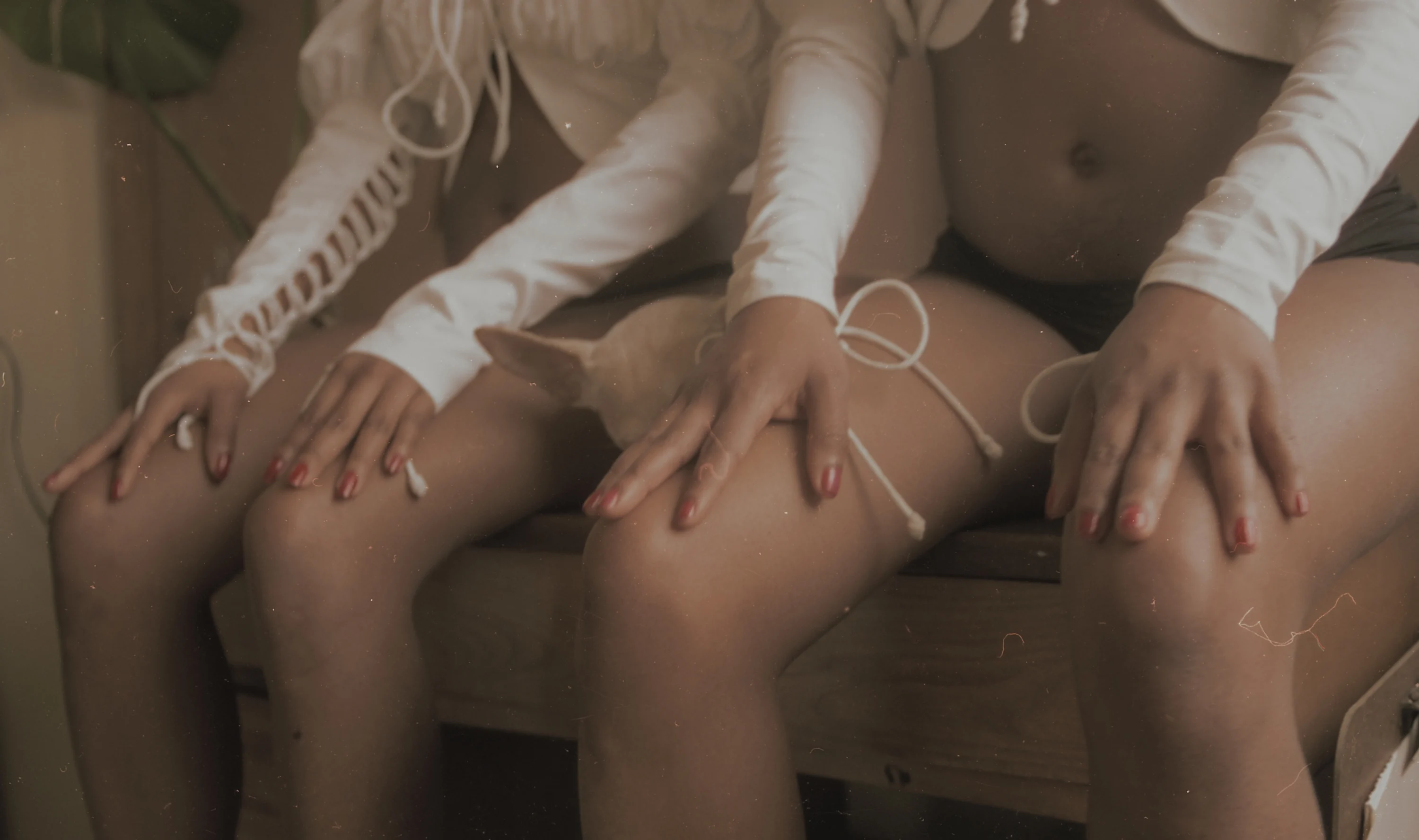
I’m always trying to pull out some sort of vulnerability in my subject.
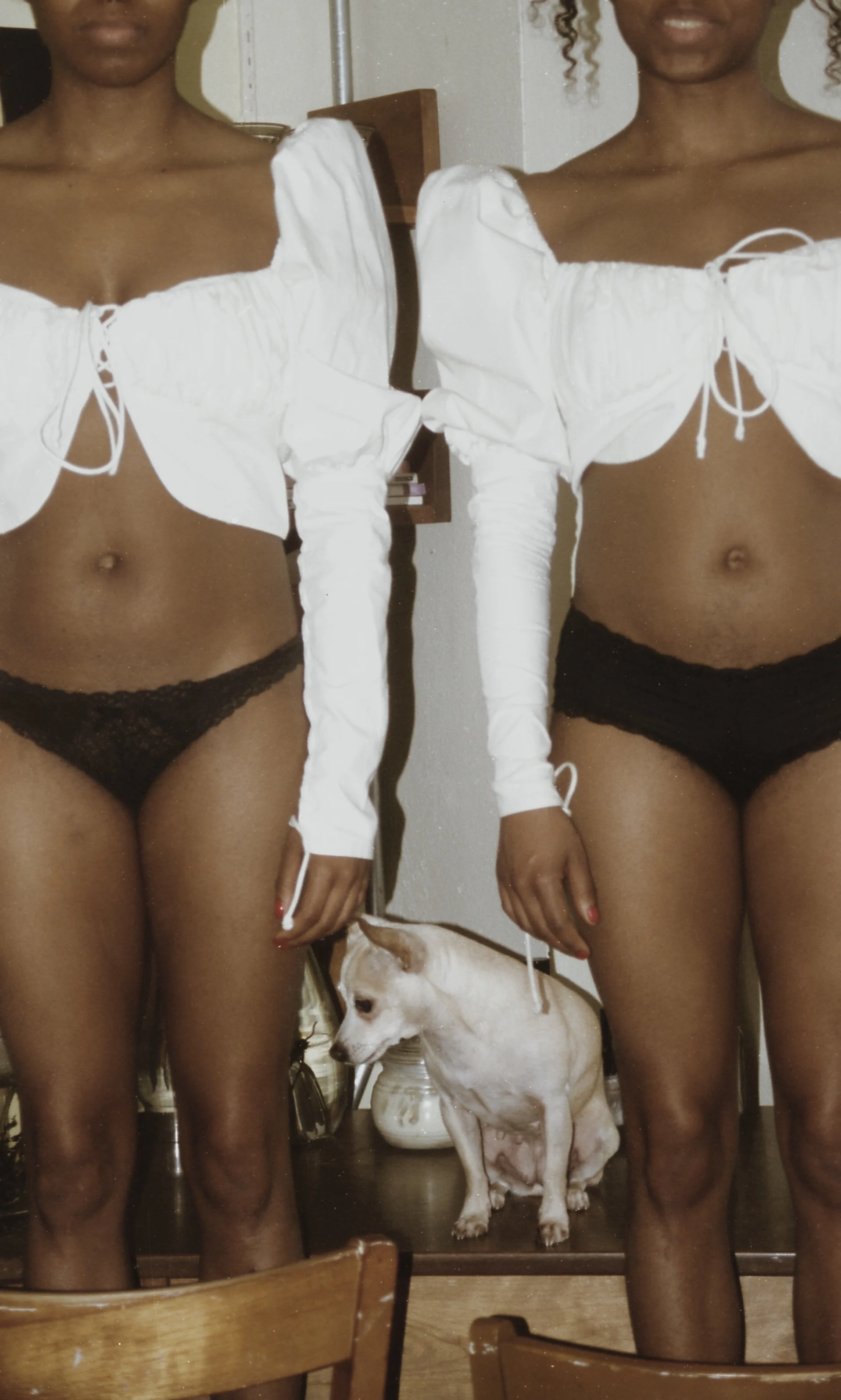
All of the subjects in Sis. are friends or muses who have become friends. For Rikkí, sisterhood is community. Losing their mother so young, she and her sister formed a bond through protecting each other. “That was my first form of community,” she says, “and I’ve identified that as what I want community to look like for me: a place where I can go and feel protected and safe.”
In her photographs, Rikkí’s subjects hold hands, lean on each other’s shoulders or share a moment mirroring each other’s body language. When she’s shooting she keeps any direction to a minimum and lets things play out, trying to capture the pauses in between poses. To get the best out of her subjects she always begins a session with a conversation. It’s become an integral part of her practice. “I’m always trying to pull out some sort of vulnerability in my subject and I think that the only way I can get there is to connect with them on some sort of level before I even pull my camera out,” she says. Shooting with a 50mm lens adds to the intimacy of the shots. As it’s a fixed lens she needs to get physically close to her subject. “If you can zoom in you’ll stay further away or you’ll miss something that you can see if you’re just closer and more intimate,” she says.
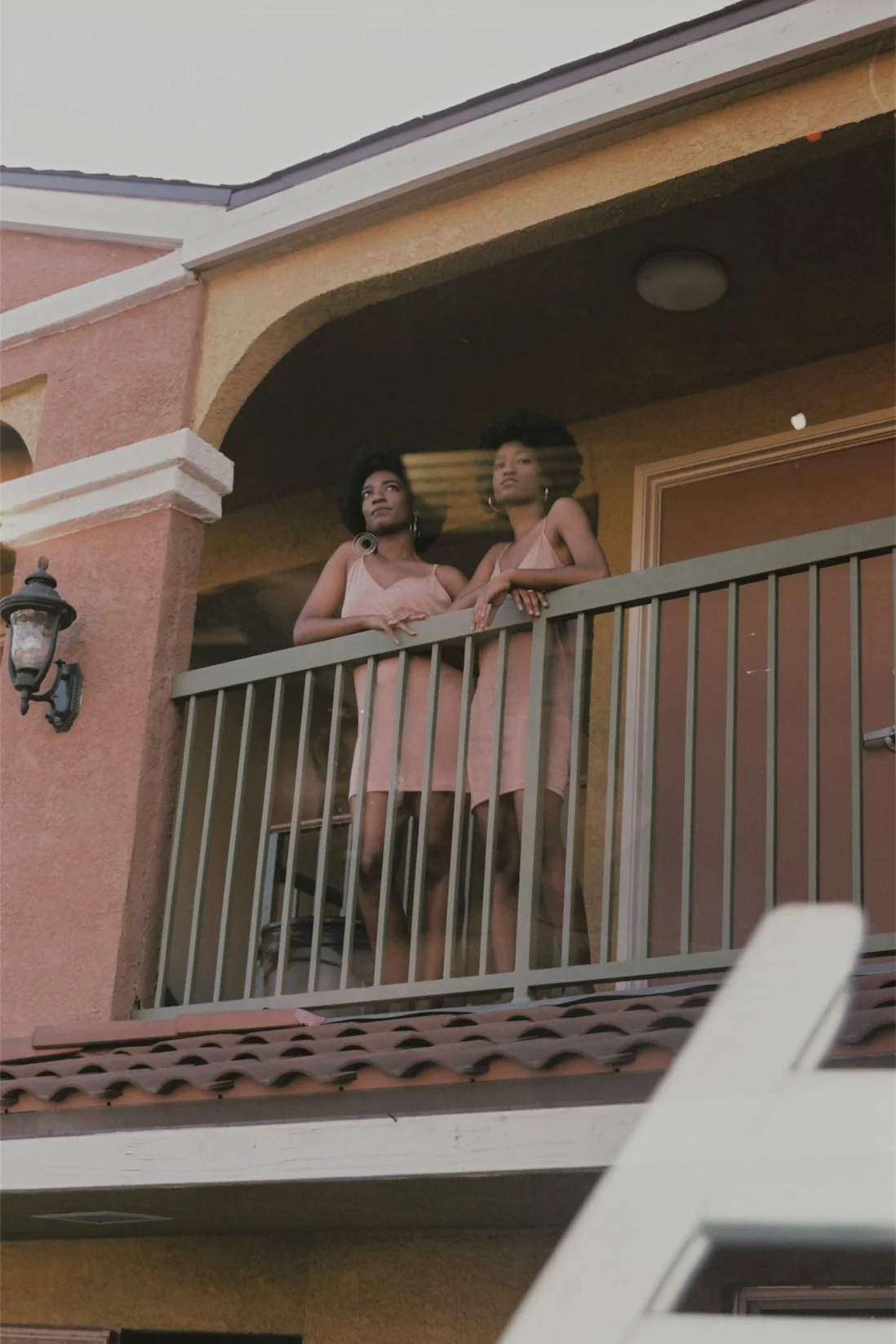
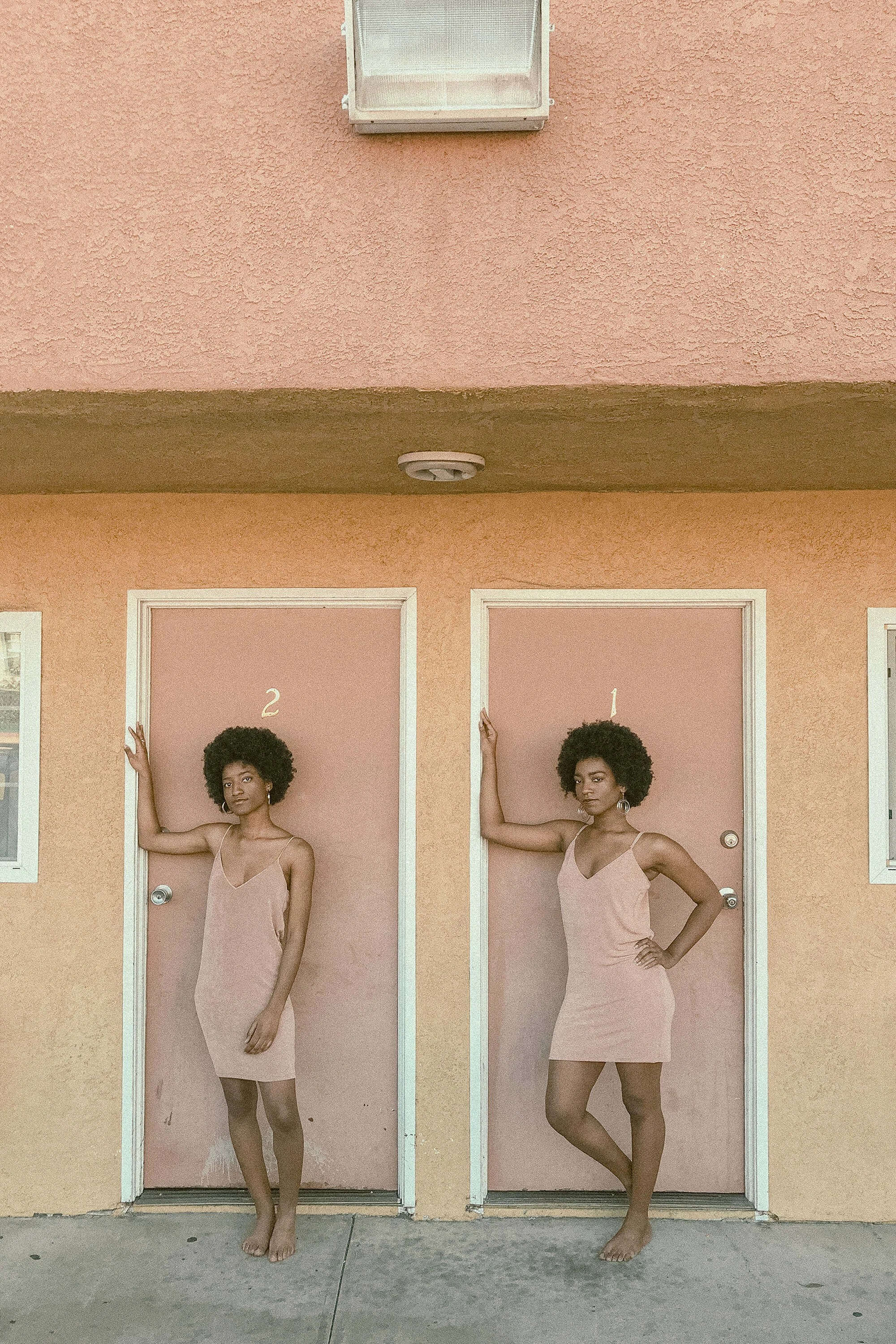
The locations for Sis. were always familiar places: either in Rikkí’s own backyard, at her subjects’ homes or around their neighbourhoods in Miami or LA. “It’s mostly walking and talking and stopping at a place,” she says. The image of the twins leaning over a blue balcony was shot in the art deco district in South Beach in Miami and the photo of the twins standing in front of two pink doors was shot outside an old motel in Hollywood. Like her sepia-inspired colours, the buildings she chooses as a backdrop often feel like they’re from another time; and even when she’s shooting digital her images have the soft focus and grain of the film photographs on her grandmother’s living room wall.
Rikkí sees her role as a folklorist. What began as documenting her own family holidays as a teenager has blossomed into projects, like Sis., which document community and shared histories. “I make work for women who look like me,” she says. “Women who come from where I come from, from an emotional place. Women who can share, or who can identify or connect with any part of my story. I want for people to understand the complexities of the black woman. I’m really trying to reclaim our narrative in some way and put it out there as something that’s beautiful.”

